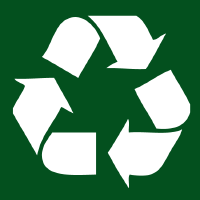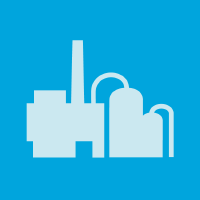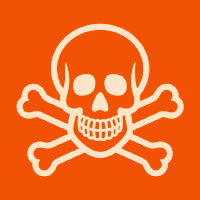Cloth masks and mask sterilisation
Cloth masks and mask sterilisation as options in case of shortage of surgical masks and respirators
26.03.2020 - European Centre for Disease Prevention and Control An agency of the European Union
This document aims to provide advice on the use of cloth face masks and sterilisation of respirators and surgical masks as an alternative in healthcare settings with suspected or confirmed COVID-19 cases if there is a shortage of specialised surgical masks and respirators.
...
Scope of this document
This document aims to provide advice on the use of cloth face masks and sterilisation of respirators and surgical masks as an alternative in healthcare settings with suspected or confirmed COVID-19 cases if there is a shortage of specialised surgical masks and respirators.
Target audience
Public health authorities and hospital administrators in EU/EEA countries and the United Kingdom.
Use of cloth face masks for protection against COVID-19 in clinical settings
There is limited guidance and clinical research to inform on the use of reusable cloth face masks for protection against respiratory viruses. Available evidence shows that they are less protective than surgical masks and may even increase the risk of infection due to moisture, liquid diffusion and retention of the virus. Penetration of particles through cloth is reported to be high. In one study, 40–90% of particles penetrated the mask. In a cluster randomised controlled trial, cases of influenza-like illness and laboratory-confirmed viral illness were significantly higher among healthcare workers using cloth masks compared to the ones using surgical masks [1,2].
Altogether, common fabric cloth masks are not considered protective against respiratory viruses and their use should not be encouraged. In the context of severe personal protective equipment (PPE) shortages, and only if surgical masks or respirators are not available, home-made cloth masks (e.g. scarves) are proposed as a last-resort interim solution by the US CDC until availability of standard PPE is restored (https://www.cdc.gov/coronavirus/2019-ncov/hcp/ppe-strategy/face-masks.html).
Are there cleaning/sterilisation methods that make it possible to reuse single-use respirators (FFP2 and FFP3)?
Surgical masks are made for single use. Respirators are usually discarded after use, but can also be considered limited-use devices, that is, they can be reused for a limited time, unless there is a risk for contamination through the deposition of infectious particles on the surface. For example, when used for the care of patients with tuberculosis, it is acceptable that respirators are reused for a limited number of times by the same healthcare worker. When the respirator becomes soiled with bodily fluids, when it gets wet, when it can no longer be properly fitted, or if breathing through the respirator becomes difficult, it has to be discarded. It also needs to be discarded after being used in an aerosol-generating procedure (AGP), as it is considered heavily contaminated. So far, manufacturers have had no reason or incentive to develop methods for decontamination or introduce reusable masks, but it is obvious that there is an urgent need to develop reusable masks that can be decontaminated.
SARS-CoV-2, the virus causing COVID-19, survives in the environment, including on surfaces of various materials such as iron, cardboard and tissue. This explains that there is a risk that the outer surface of respirators and surgical masks used in patient care can quickly become contaminated. Contamination of the surface of respirators and surgical masks entails a risk for infection when reusing a mask or respirator.
A 2006 report by the US National Academy of Sciences on the possibility of reusing respirators during an influenza pandemic discourages this practice for a number of reasons. First, the committee could not identify any existing method that effectively removes the viral threat, is harmless to the user, and does not compromise the integrity of the various elements of the facemask. The report recommended alternative approaches, such as extended use.
Contamination of the respirator surface can be avoided by placing a medical mask over it, or wearing a face shield that can be cleaned [3].
Because of severe shortages of respirators and surgical masks in the COVID-19 pandemic, a number of methods could be considered for the sterilisation of used masks, mostly respirators.
Steam sterilisation is a routinely used procedure in hospitals. Mask deformation or failing fit test after steam sterilisation at 134 °C has been reported in a study performed in the Netherlands, depending on the type of FFP2 mask used [4]. Steam sterilisation at lower temperatures is under study.
One study commissioned by the US Food and Drug Administration (FDA) showed that hydrogen peroxide vapour (HPV) was effective in decontaminating N95 respirators from a single organism for multiple cycles of decontamination. The respirator maintained its function even after 10–20 cycles of HPV, but showed signs of degradation after this. A pilot study in the Netherlands indicated that the method is effective for two decontamination cycles without deformation while retaining filtration capacity as assessed by a rapid fit test1, suggesting that the tested FFP2 masks (models without cellulose) can be re-used up to two times. A possible caveat of this method is that harmful concentrations of hydrogen peroxide may remain on the mask for days after decontamination. Another concern is that more decontamination cycles can lead to deformation. Also, filtration has not been assessed adequately [4].
Gamma irradiation is a method commonly used for the large-scale sterilisation of medical devices and food items. The necessary equipment is not commonly available in hospitals. A study indicated that a dose of 20kGy (2MRad) is sufficient for the inactivation of coronaviruses [5]. Ongoing studies on using gamma irradiation with a 24kGy dose to sterilise respirators have shown the possible deformation of the mask, compromising the inner filtering layer and the mask fitting on the face. A study in the Netherlands showed no deformation of one FFP2 mask after gamma irradiation with 25kGy, but the fit test after the decontamination process failed [4] (updated results as of 20 March 2020).
Other methods such as ozone decontamination, ultraviolet germicidal irradiation and ethylene oxide have also been considered [6].
The above-mentioned methods are only considered as extraordinary last-resort methods in the event of imminent shortages of PPE. They should only be applied after a careful evaluation of the situation and after exploring the possibility of resource-conscious, rational PPE use, for example by extending a respirator’s lifespan beyond its normal limits. National public health authorities, and groups studying such methods are encouraged to share their results as soon as they become available.
Cleaning of reusable equipment before sterilisation is recommended but there are no data available on the effective and non-damaging cleaning methods for single-use equipment such as masks. Quality checks of the applied sterilisation methods (including the establishment of quality indicators) are necessary to ensure the safety of the equipment to be reused.
________
1 Fit test: Ratio of particles outside to particles inside mask using TSI PortACount Pro+ 8038. Unused mask (control): ratio=162; RIVM considers fittest sufficient if the ratio is >100 after the decontamination process.
...
References
1. MacIntyre CR, Seale H, Dung TC, Hien NT, Nga PT, Chughtai AA, et al. A cluster randomised trial of cloth masks compared with medical masks in healthcare workers. BMJ open. 2015;5(4):e006577.
2. MacIntyre CR, Chughtai AA. Facemasks for the prevention of infection in healthcare and community settings. BMJ. 2015;350:h694.
3. Medicine Io. Reusability of facemasks during an influenza pandemic: Facing the flu. Washington, DC: The National Academies Press; 2006.
4. RIVM. Hergebruik FFP2 mondmaskers 2020. Bilthoven: RIVM; 2020. Available from: https://www.rivm.nl/documenten/hergebruik-ffp2-mondmaskers.
5. Feldmann F, Shupert WL, Haddock E, Twardoski B, Feldmann H. Gamma irradiation as an effective method for inactivation of emerging viral pathogens. Am J Trop Med Hyg. 2019 May;100(5):1275-7.
6. Viscusi DJ, Bergman MS, Eimer BC, Shaffer RE. Evaluation of five decontamination methods for filtering facepiece respirators. Ann Occup Hyg. 2009;53(8):815-27.
Fonte: EU
Collegati:
OMS: quando e come usare le maschere
UNI EN 149:2009 | Marcatura CE semimaschere filtranti FFP
Coronavirus: Corretto uso delle mascherine
































